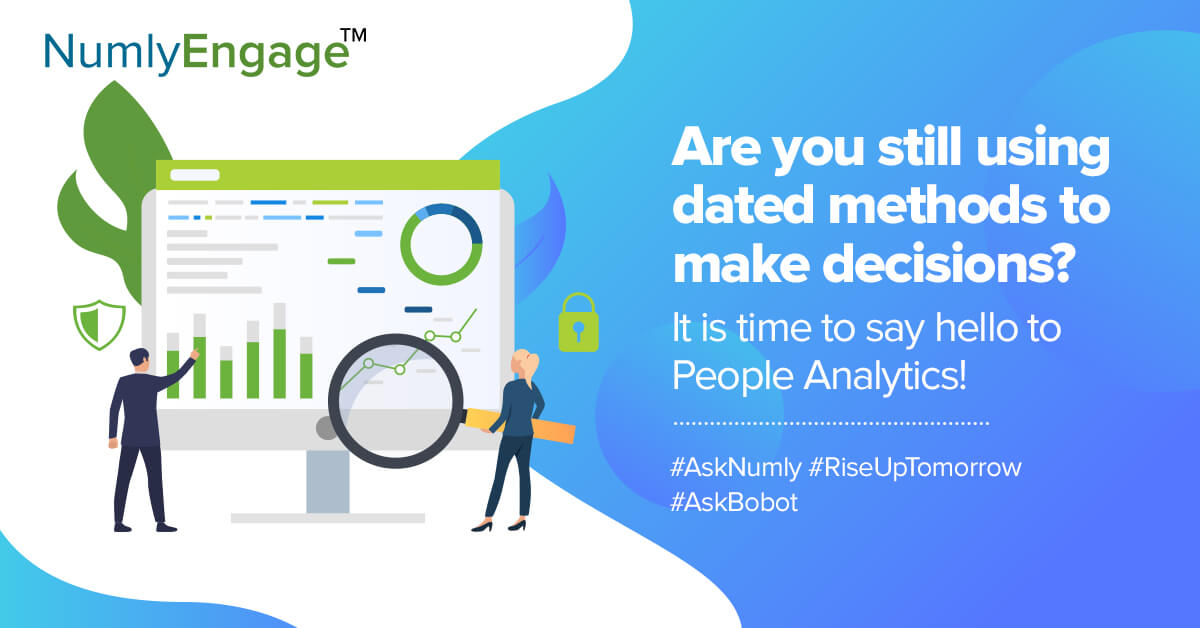Just over a century back, oil emerged as the most lucrative resource one could think of.
With the dawn of the digital era, there came a new commodity that overtook oil. That commodity was data. Today, data is the currency on which the world runs since it is fact-based and unequivocal, as opposed to opinion.
In the initial days, data analytics, the vehicle that made data invaluable, was all about discovering interesting information and flagging it off for organizational leaders. Over the years, as more organizations are becoming data-driven, data analytics is considered an essential ingredient to enable good decision-making across all departments and all levels.
The rise of People Analytics in HR
Today data is being embedded into everyday decision-making and is used to understand every aspect of the business operations. The HR department too is not immune to the lure of data and is using people analytics heavily for managing all aspects of workforce planning, driving operational improvements, and engaging with employees.
People analytics in HR has undergone a seismic shift. From being a technical subset that analyzed retention, it has matured and is being used to get deep insights to drive performance and employee engagement. People analytics is now being used heavily to discover, interpret, and communicate meaningful patterns hidden in workforce data to make informed decisions and consequently drive performance. Along with tracking basic HR metrics, people analytics is being increasingly used to understand every aspect of how people impact business value.
Factors such as the availability of data, the increase in the capability of organizations to process and analyze that data, and the HR’s ability to use that data have been responsible for the growing popularity of people analytics.
The workforce analytics market is now expected to reach USD 1.87 billion by 2025 as organizations lean in towards adopting data to manage its workforce.
So how do People Analytics help organizations and HR teams improve their workforce management?
Discover drivers of high performance
People analytics is finding firm ground across organizations since it can be a valuable resource to discover the unique factors that influence organization-wide performance. With insights gleaned from different aspects of the workforce, organization leaders and HR teams can collectively identify the drivers of high performance and then develop strategies to enable the workforce accordingly.
Organizations can also apply these insights to their recruitment practices and talent management strategies and also to address performance gaps.
Diversify hiring and eliminate bias
Diversity has become an organizational priority since it has been proved that diversity in teams impacts organizational performance positively. Diversity in workgroups drives a richer flow of ideas, aids creativity and innovation, and improves problem-solving capabilities.
Studies show that organizations that focus on diversity are 35% more likely to financially outperform their competitors who do not emphasize diverse hiring practices. Gender diverse workforces also outperform less diverse companies by 15%.
People analytics can play a big role in enabling diversity initiatives by helping organizations identify the characteristics associated with successful hires and apply those to processes to assess candidates with these traits. This makes the recruitment process faster and enables HR teams to make their diversity initiatives more intentional.
Read: Mentorship Programs – The Critical Piece To Drive Successful Enterprise Diversity Initiatives
Win the talent war and manage attrition
There was once a time when organizations won the talent war by throwing more money into the mix. Today, the story is quite different.
With more millennials coming into the workforce and changing employee dynamics, people analytics can prove to be a valuable tool to create profiles of at-risk workers by understanding the key reasons behind the same. These insights assist organizations to make more informed and concrete efforts to convince these employees to stay on by providing directed learning and development opportunities and providing coaching to drive engagement.
Read: Purpose-Led Engagement for Women and Millennials
Identify high-potential employees
Most organizations today also want to create a robust succession pipeline. For this, it is imperative to identify their high-potential employees who have the capacity to drive the organization’s success in the future.
Analyzing professional and educational backgrounds and performance ratings allow people analytics to provide the right insights to identify these high-potential employees and also helps the organization identify what motivates them. Using this information, organizations can develop strategies to help these employees move further along their growth path, keep them engaged, and avoid losing them to attrition.
Read: Employee Retention Strategies for Top Talent
Fine-tune coaching and training strategies
People analytics can help organizations improve and fine-tune their training and coaching initiatives. Leveraging data, HR can measure the impact of their training and leadership development programs. This becomes especially relevant when the world of work has moved to a virtual setting owing to the COVID-19 pandemic.
People analytics moves beyond employee engagement data and helps organizations identify where to invest in leadership development. This becomes more relevant since most organizations co-relate specific leadership skills with employee engagement and productivity levels. People analytics ensures that these correlations do not become erroneous by accounting for the complexity of the data.
Since people analytics leverages multiple data sets and sorts through these complexities, it provides the prioritized behaviors needed for leadership development or coaching that will contribute to specific business outcomes. This information can be then leveraged by HR teams to fine-tune and refine their coaching and training strategies.
People analytics also helps organizations proactively identify the kinds of coaching programs they need by accurately measuring and assessing skill gaps across functions and departments. Creating the right, relevant, contextual, and structured employee development programs using personalized coaching for each employee at scale across the entire organization then becomes easier.
Improve employee experience
Employees are an organization’s internal customers. Just like how organizations have become hyper-focused on customer experience, they have also started to look out for their internal customers – their employees. The importance of employee experience has exploded in the enterprise since businesses are struggling to engage employees to drive business results. With the workforce moving into a more virtual setting, employee experience is proving to be an important aspect to drive retention, productivity, and ensure better talent management.
People analytics effectively maps every touchpoint within employee experience and helps HR predict, manage, and measure the impact of their efforts and activities by linking them to business outcomes.
In Conclusion
People analytics helps in making workforce planning and strategic business planning a parallel process and also promotes a culture of objective transparency. The insights generated from people analytics provide valuable workforce information that can then be employed to create the right people practices. This helps in ensuring and developing correct talent attraction, retention, engagement, performance management, career planning, and rewards and recognition programs. These insights can also be utilized to enhance leadership development and create strategic pathways to help employees move northwards on their career trajectories.
Contact us to see how we use AI and people analytics to help organizations drive employee engagement and experience and develop their leaders for tomorrow.

